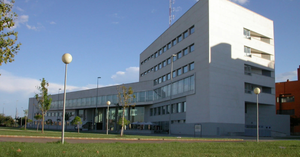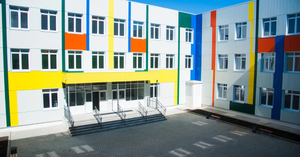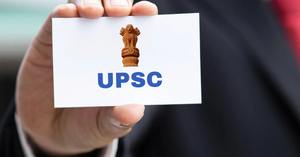When discussing factors that contribute to student success, academic rigor, faculty expertise, and curriculum design are often the focal points. However, one crucial yet sometimes overlooked component of student success is the role of campus facilities. These facilities go beyond classrooms and lecture halls; they encompass a broad spectrum of physical spaces that provide students with the resources, environments, and services they need to thrive academically, socially, and personally.
While it may seem that academic success is primarily influenced by the learning that occurs in classrooms, research suggests that the campus environment, from libraries to wellness centers, plays a significant role in shaping students' overall well-being and, consequently, their success. This article explores how various campus facilities — including classrooms, libraries, recreational spaces, housing, and dining services — contribute to student outcomes. These elements work in harmony to create an environment that promotes academic achievement, personal development, and long-term success, making campus facilities an integral part of the higher education experience.
Classrooms and Learning Environments
Classrooms are at the heart of academic institutions, serving as the primary setting for intellectual exchange and learning. However, not all classrooms are created equal, and the quality of the physical learning environment can significantly impact the educational experience. Modern classrooms, equipped with advanced technology such as smartboards, video conferencing tools, and interactive platforms, foster active learning and engagement. These facilities enable professors to integrate multimedia content, create dynamic discussions, and accommodate different learning styles, thereby enhancing the educational experience.
In addition to technology, the flexibility of classroom spaces also matters. Traditional lecture-style seating is being replaced with modular layouts that can be reconfigured for group work, discussions, and hands-on activities. This shift supports collaborative learning, allowing students to engage more deeply with the material and with each other. Research indicates that students who learn in flexible, well-designed spaces are more likely to participate actively in class and retain information better.
The importance of lighting, acoustics, and even air quality in classrooms is another factor often overlooked. Studies have shown that poor lighting and acoustics can hinder concentration and learning, while well-lit and acoustically sound spaces enhance focus and productivity. Classrooms that prioritize student comfort through ergonomic seating and climate control also help minimize distractions and improve the overall learning experience.
Ultimately, the design and functionality of classrooms can either support or inhibit academic success. When institutions invest in high-quality, adaptable, and technologically advanced learning spaces, they empower students to engage fully with their education, laying the groundwork for higher levels of achievement.
Library and Study Areas
Libraries have long been considered the academic hub of any campus, and their role in student success cannot be understated. Traditionally seen as quiet spaces for individual study, modern libraries have evolved into multifaceted environments that cater to various academic needs. Whether a student is seeking a quiet space to focus, a collaborative area for group projects, or access to academic resources, the campus library provides a versatile setting that enhances learning.
The presence of digital resources in libraries has transformed the way students access information. With databases, e-books, and academic journals available at their fingertips, students no longer have to rely solely on physical books for research. This digital accessibility allows students to conduct research from anywhere on campus, at any time, expanding the potential for learning beyond traditional library hours.
Collaborative study areas, often equipped with whiteboards, screens, and adaptable furniture, encourage group work and peer learning. These spaces foster communication and idea exchange, which is vital in developing critical thinking skills. Additionally, libraries that offer support services such as writing centers or research help desks provide students with the guidance needed to improve their academic performance.
The integration of libraries and study areas into campus life is essential in creating an environment conducive to learning. These spaces not only provide the tools students need to excel academically but also foster a sense of community, where students can work together to achieve common academic goals.
Recreational and Wellness Facilities
Beyond academic spaces, recreational and wellness facilities are vital components of student success. Physical and mental well-being are strongly linked to academic performance, and campuses that prioritize health and wellness by providing access to gyms, sports facilities, and wellness centers help students maintain balance in their lives.
Exercise has been shown to reduce stress, improve mood, and enhance cognitive function, all of which are critical for academic success. By providing access to gym facilities, fitness classes, and sports programs, campuses encourage students to adopt healthier lifestyles. This, in turn, translates into better focus, higher energy levels, and improved performance in academic settings.
Wellness centers that offer mental health services, counseling, and stress management programs are equally important. Mental health issues, including anxiety and depression, are prevalent among college students, and the availability of on-campus resources can make a significant difference in students' ability to cope with academic and personal challenges. These services provide students with the tools to manage stress, develop healthy coping mechanisms, and seek help when needed.
Overall, recreational and wellness facilities play an essential role in supporting students' physical and mental health, which are key components of their overall success. A healthy student is more likely to be a successful student, and campuses that prioritize these facilities demonstrate a commitment to the holistic well-being of their students.
Housing and Dining Services
On-campus housing and dining services are often overlooked when considering factors that influence student success, but they play a crucial role in shaping students' daily lives. Living on campus fosters a sense of community and belonging, which can reduce feelings of isolation and homesickness. Research suggests that students who live in on-campus housing are more likely to engage with campus activities, form stronger social networks, and experience higher levels of academic success.
In addition to fostering community, on-campus housing provides convenience. Students living close to their classes and academic resources save time and reduce stress, allowing them to focus more on their studies. Having a stable and safe living environment also contributes to better academic performance, as students are less likely to face distractions or disruptions that could hinder their learning.
Dining services that provide nutritious and diverse meal options are equally important. Proper nutrition is linked to cognitive function and energy levels, both of which are essential for academic success. Campuses that offer healthy meal plans, accommodate dietary restrictions, and ensure easy access to food help students maintain their physical health, which in turn supports their academic endeavors.
Conclusion
Campus facilities are more than just physical spaces; they are integral to creating an environment that supports students in achieving academic and personal success. From state-of-the-art classrooms to comprehensive wellness centers, each facility plays a unique role in shaping the student experience. By offering a combination of academic, recreational, and living facilities, campuses create a holistic environment that promotes not just academic learning but also personal development, mental well-being, and community building.
Ultimately, investing in campus facilities is investing in student success. When students have access to the resources they need, they are better equipped to excel in their academic pursuits and emerge as well-rounded individuals prepared for future challenges.









Be the first one to comment on this story.